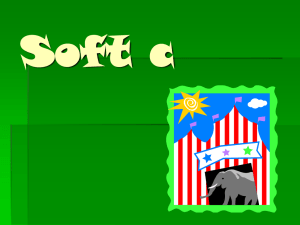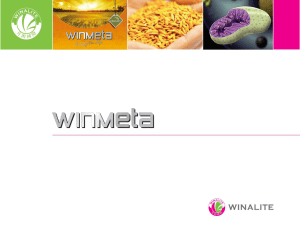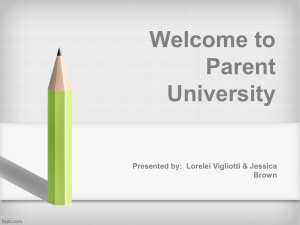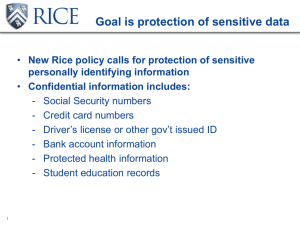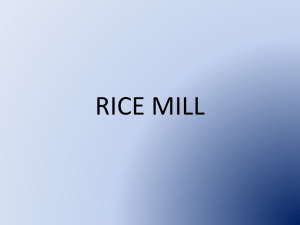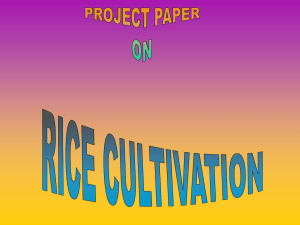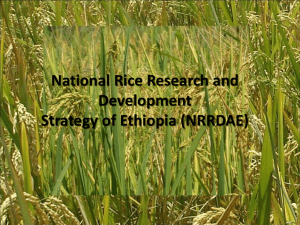Drainage and irrigation in Rice production in Suriname
advertisement
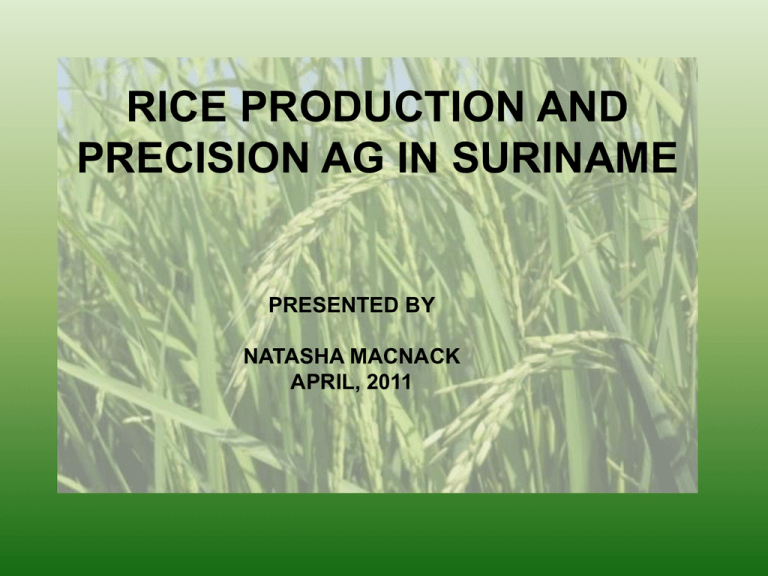
RICE PRODUCTION AND PRECISION AG IN SURINAME PRESENTED BY NATASHA MACNACK APRIL, 2011 Outlines • • • • Rice facts from around the world Suriname facts Rice production in Suriname Current practices and need for improvement • Actions & initiatives towards improvement (ADRON) Rice production worldwide Rank • • • • Grown > 100 countries Nearly 160 million hectares > 700 million tons/year ± 90% produced in Asia Area Production (MT) 1 China 193,354,175 2 India 3 Indonesia 4 Bangladesh 148,260,000 60,251,072 46,905,000 5 Viet Nam 6 Thailand 7 Myanmar 8 Philippines 9 Brazil 10 Japan 11 Pakistan 12 United States of America 13 Egypt 14 Republic of Korea 15 Cambodia Rice production top 15 countries Source: FAOSTAT 38,725,100 31,650,632 30,500,000 16,815,548 12,061,465 11,028,750 10,428,000 9,241,173 7,253,373 6,919,250 7,175,473 Suriname facts Population: 447,000 Area:163,265 square kilometers (63,037 square miles) Formerly known as Dutch Guyana Official Language: Dutch Main ethnic groups: East Indians or Hindustani, Creole, Indonesian, Maroon, Native Indians, Chinese Independence: 1975 Economy Bauxite and gold mining, alumina production Agriculture: Paddy rice, bananas TIMELINE We distinguish seven overlapping steps in the Rice development in Suriname Until 1873, Cultivation of mainly dry land rice; 1873-1900, Paddy rice or irrigated rice was informally introduced in Suriname by Indians and Javanese; 1900-1949, The Agricultural experimentstation the only institute that supported Rice production in Suriname with research; 1933-1949, Research in mechanization of Rice production by van Dijk and later the addition of rice breeding by Ir. A. D. Van Dijk, in collaboration with the Agricultural experiment station; 1949-1975, The foundation for Mechanized agriculture Suriname (Stichting Machinale Landbouw Suriname (SML)) introduces mechanized rice production on their land supported by research and rice breeding; 1975-1993, The SML could no longer be supported as a research institute and became more of a production company; 1994, Anne van Dijk Rice Research Center Nickerie (ADRON)starts its research, focus is on breeding Rice Production in Suriname More than 100 years rice cultivation experience More than 60 years research experience Mainly cultivated in the north western part of Suriname Constructed paddy area (55.000 hectare) Current Production stands at 182,877 (0.03% of world production) Rice farms can roughly be divided into: - Small Farms 1-24 ha - Mid level farms 25-250 ha - Large scale farms> 250 ha Export markets for Suriname Rice Other, 15% Netherlands, 35% Other EU, 19% Caricom, 30% Volume of Rice exported from Suriname (000’s MT) 2001-2009 Current practices and need for improvement Main factors high output •Good quality seed •Good leveled production fields •Early sowing •Low level of red rice (1%Red rice=400kg loss paddy/ha) •Proper water management •Rate and timing of fertilizer application Current practices and need for improvement Water management Traditionally: 5-6 passes in preparing land Dry Tillage Wet Tillage o Flooding the field o Plowing o Puddling o Leveling: o Four-wheel tractor using rear mounted tractor blades or wooden beam o Not enough attention to land leveling Laser leveling • Better water distribution across the field • Better Crop stands • Reduces weed problems • Results in uniform crop maturity Current practices and need for improvement Water management “having water where you need it and when you need it” - Improper functioning of irrigation & Drainage infrastructure - Lack of maintenance on Canals & Civil engineering works - Inadequate functioning of water management units Inefficient use of freshwater Canal overgrown by aquatic weed Consequences • • • • Production decreases Constructed rice production areas left idle Higher production costs Late sowing Actions & initiatives towards improvement Anne van Dijk Rice Research Center (ADRON) Part of International Network for Genetic Evaluation of Rice Rice related research Focus is on: Breeding, testing new lines and conservation Genetic material from IRRI and CIAT Government Programs in Collaboration with the EU Actions& initiatives towards improvement cont’d • Land preparation Minimum Tillage introduced Training farmers in benefits of leveling Use of laser leveling • Water management Water management bodies Government subsidizes maintenance of infrastructure ADRON studies (field level) of interactions with fertilizers/nutrients Conclusions • PA involves doing the right things in the right place at the right time • Many inefficiencies in the field • Many can be traced back to Government policy Dank u wel! THANK YOU!
